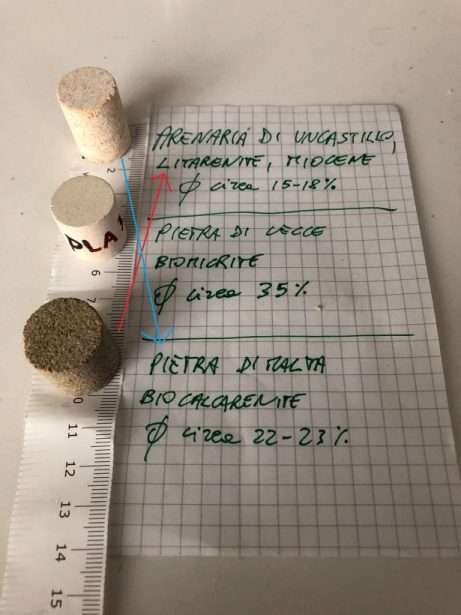
NMR CRYOPOROMETRY vs NMR RELAXOMETRY – A COMPARATIVE STUDY
This Poster (poster_cryo_vs_relx) has been presented at the GIDRM national conference of 2021 and it deals with a comparative study on NMR cryoporometry and NMR relaxometry.
Low-field Nuclear Magnetic Resonance is a technique widely used in petrophysics for porous media characterization in terms of pore size distribution and porous matrix properties, such as wettability, permeability, porosity.

NMR cryoporometry apparatus.
There are two NMR approaches to this problem:
- NMR cryoporometry measures the melting curve of water frozen in the pores, exploiting the fact that a) water melting temperature depends strongly on pore sizes and b) in NMR it is very easy to quantitatively distinguish the liquid water and solid water signals. An efficient temperature controller was used to vary the sample temperature within the interval of 0 to -40 °C, while NMR echo signal is being continuously collected.
2. Classical NMR relaxometry is used to acquire SR (saturation recovery) of IR (inversion recovery) curve(s) that are then subject to an ILT (Inverse Laplace Transform) analysis. Here one exploits the fact that the relaxation times of water also depend strongly on the pore sizes.

NMR low-field Relaxometry apparatus.
These being two very different experimental path having the same metrological goal, a careful investigation of their compatibility is required.
The results of this study reveal that the two techniques are complementary. For a better and more complete analysis of porous media both of them should be used.
Extra Byte has teamed up with Lab-Tools (UK) and with the DICAM Department of the University of Bologna (Italy), in particular with the MRPM division, to study the relation between the two approaches and the avenues towards combined evaluation of the distinct data sets.



